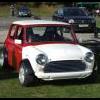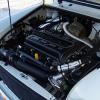
Testing Piston Rings..
#16

Posted 06 January 2010 - 10:26 PM
#17

Posted 06 January 2010 - 10:31 PM
#18

Posted 06 January 2010 - 10:51 PM
Lol, i guess all the bits i mentioned don't exist then!
Yes, but the skirt is the whole of the side of the piston and the crown the top
#19

Posted 06 January 2010 - 10:53 PM
#20

Posted 06 January 2010 - 11:06 PM
#21

Posted 06 January 2010 - 11:59 PM
Who taught you that?!
I think minispud is making it up as he goes along
If you got a short block engine and need to check to see if it needs a rebore, you don't take the pistons out, you find out the max piston-to-bore clearance from the manufacturer, then slip a feeler gauge in between the piston and the bore, so it stops as it touches the top ring on the trust side of the piston and read it's size. This will tell you how the bores are doing, baring any bad groves that you can see, if the reading is within said clearances then it's ok.
But that is just it, you dont!!
How many times do people (read that as I) have to point out your mistake
And the only reason I am persisting wih this, is that you will tell all and sundry, how to measure piston to bore clearance incorrectly leaving a trail of mayhem behind you!!!!!!!!!!!!!!!.....................
The skirt starts after the bottom ring, the ring pack is part of the crown. I mean, the Queen doesnt just wear a thin plate of gold on Her head, does She?
Angain, in the nicest possible way, you are wrong!
#22

Posted 07 January 2010 - 12:31 AM
There you go:

#23

Posted 07 January 2010 - 08:05 AM
At no time should any part of the ring belt or crown touch the bore, it is unlubricated, and this is why pistons are considerably smaller diameter at that point. Piston to bore clearance is on the skirt, and the largest diameter would be measured at the base of the skirt at 90 degrees to the wrist pin. This is because the dimention of the piston anywhere else is smaller to accomodate different expansion rates due to the different mass of the piston construction and regional temperature variations. Basicaly, once the piston is up to running temperature it becomes more round and the skirt at the bottom 90 degrees across the pin is the part that expands the least.
#24

Posted 07 January 2010 - 10:22 AM
#25

Posted 07 January 2010 - 11:38 AM
#26

Posted 07 January 2010 - 12:16 PM
The gap at the top of the piston is sufficiently large for us to take in to account when calculating compression ratios and is even exploited in some cases to increase ring to bore contact by directing cylinder pressure to the back of the top ring. It's probably not the best place to look for signs of wear. Since the function of the piston we're interested in is to keep the cylinder pressure in the cylinder and out of the crankcase then that is what we'd be best measuring with a compression or leak down test.
A skirt is surely something that hangs down (i.e. is only attached at its top edge)?
#27

Posted 07 January 2010 - 01:46 PM
#28

Posted 07 January 2010 - 03:47 PM
0 user(s) are reading this topic
0 members, 0 guests, 0 anonymous users
















